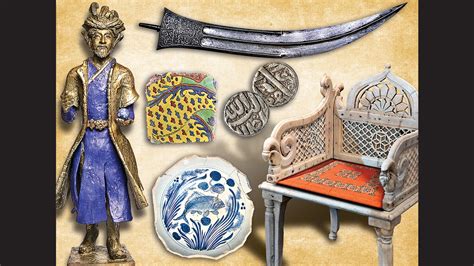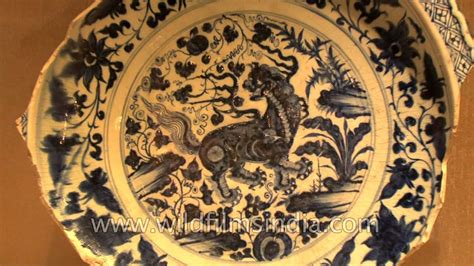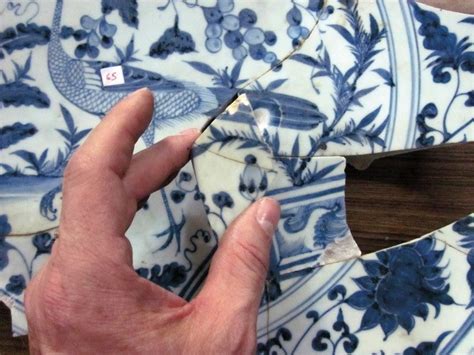chinese ceramics excavated from firoz shah kotla Follow the stories of Ellen Smart, Aprajita Sharma, and Steven Gaskin to learn how they were lured by the world's largest collection of Yuan dynasty blue-and-white porcelain, and their . By following these steps and practicing, you’ll get better at using a mini excavator. Remember, training and reliable equipment are essential for success. Mastering the Joysticks: Left and .
0 · Tales from the crypt: An exclusive preview of Delhi
1 · Historical pottery of Tughlaq Period from Firoz Shah Kotla, Delhi
2 · For the Love of Broken Porcelain: The Delhi Hoard
3 · Contribution Of Firoz Shah Kotla And Its Prototypes
4 · Come and explore 50 years of Indian excavation history
5 · Catalogue Hoard of Chinese Porcelain A rare doscovery from
6 · Blue
7 · 14th century Chinese blue
8 · (PDF) For the Love of Broken Porcelain The Efforts to
9 · (PDF) Chinese Porcelain of Yuan Period Discovered
The E35 is a zero-tail-swing compact excavator with a 25 hp engine and a 7,659 lb operating weight. It has a refined joystick control, an exclusive in-track frame, and a dual-flange roller system for enhanced performance and maneuverability.
The paper thus deals with the findings of Chinese porcelain at Gaur excavated by the Archaeological Survey of India. It also talks about the porcelain finds .

This catalogue was prepared exclusively for the exhibition 'Hoard of Chinese Porcelain: A Rare Discovery from Firozshah Kotla'. The exhibition presented one of the largest .Recently, as part of a museum curatorial workshop organized by the American Institute of Indian Studies, I created a virtual exhibition on the blue-and-white .Follow the stories of Ellen Smart, Aprajita Sharma, and Steven Gaskin to learn how they were lured by the world's largest collection of Yuan dynasty blue-and-white porcelain, and their .Our viewer Steve Gaskin tells us that these are "highly important Yuan dynasty blue and white porcelain, and showing only two doesn't highlight that the coll.
A 14th Century blue-and-white Chinese porcelain plate discovered at Firoz Shah Kotla in 1961 is something all Delhiites can look forward to at an exhibition by the Archaeological Survey.14th century Chinese blue-and-white porcelain discovered at Feroz Shah Kotla in Delhi points Indian rulers’ interests in Chinese porcelain since the Delhi Sultanate period. Blue-and-white .
They were excavated decades ago from the ruins of Feroz Shah Kotla, outside the Walled City of Old Delhi. The plates had come via sea and land from the Yuan region of 14th-century China.Erected in 1354 by Emperor Firuz Shah Tughluq on the western banks of the Yamuna River in the fifth city of Delhi, Ferozabad, the Kotla of Firoz Shah became a sixteenth-century prototype of .
How porcelain reached Firozshah Kotla? Literary references and archaeological evidence supported that Chinese blue-and-white porcelain had become popular in the 14th century CE. During this period, China was under the rule of a non-Chinese dynasty of Mongolian tribe who named themselves Yuan.
The paper thus deals with the findings of Chinese porcelain at Gaur excavated by the Archaeological Survey of India. It also talks about the porcelain finds explored by the Department of State Archaeology, West Bengal. This catalogue was prepared exclusively for the exhibition 'Hoard of Chinese Porcelain: A Rare Discovery from Firozshah Kotla'. The exhibition presented one of the largest collections of 14th century Chinese Porcelain discovered in Asia.Recently, as part of a museum curatorial workshop organized by the American Institute of Indian Studies, I created a virtual exhibition on the blue-and-white porcelain discovered at Feroz Shah Kotla (Sharma, ‘Blue-andwhite Treasures from Firozshah Kotla’). As new sites with Chinese porcelain are found in India, there is tremendous .
Follow the stories of Ellen Smart, Aprajita Sharma, and Steven Gaskin to learn how they were lured by the world's largest collection of Yuan dynasty blue-and-white porcelain, and their discoveries.Our viewer Steve Gaskin tells us that these are "highly important Yuan dynasty blue and white porcelain, and showing only two doesn't highlight that the coll.A 14th Century blue-and-white Chinese porcelain plate discovered at Firoz Shah Kotla in 1961 is something all Delhiites can look forward to at an exhibition by the Archaeological Survey.14th century Chinese blue-and-white porcelain discovered at Feroz Shah Kotla in Delhi points Indian rulers’ interests in Chinese porcelain since the Delhi Sultanate period. Blue-and-white vessels were
They were excavated decades ago from the ruins of Feroz Shah Kotla, outside the Walled City of Old Delhi. The plates had come via sea and land from the Yuan region of 14th-century China.Erected in 1354 by Emperor Firuz Shah Tughluq on the western banks of the Yamuna River in the fifth city of Delhi, Ferozabad, the Kotla of Firoz Shah became a sixteenth-century prototype of Mughal city palace architecture.How porcelain reached Firozshah Kotla? Literary references and archaeological evidence supported that Chinese blue-and-white porcelain had become popular in the 14th century CE. During this period, China was under the rule of a non-Chinese dynasty of Mongolian tribe who named themselves Yuan.The paper thus deals with the findings of Chinese porcelain at Gaur excavated by the Archaeological Survey of India. It also talks about the porcelain finds explored by the Department of State Archaeology, West Bengal.
This catalogue was prepared exclusively for the exhibition 'Hoard of Chinese Porcelain: A Rare Discovery from Firozshah Kotla'. The exhibition presented one of the largest collections of 14th century Chinese Porcelain discovered in Asia.Recently, as part of a museum curatorial workshop organized by the American Institute of Indian Studies, I created a virtual exhibition on the blue-and-white porcelain discovered at Feroz Shah Kotla (Sharma, ‘Blue-andwhite Treasures from Firozshah Kotla’). As new sites with Chinese porcelain are found in India, there is tremendous .
Follow the stories of Ellen Smart, Aprajita Sharma, and Steven Gaskin to learn how they were lured by the world's largest collection of Yuan dynasty blue-and-white porcelain, and their discoveries.Our viewer Steve Gaskin tells us that these are "highly important Yuan dynasty blue and white porcelain, and showing only two doesn't highlight that the coll.A 14th Century blue-and-white Chinese porcelain plate discovered at Firoz Shah Kotla in 1961 is something all Delhiites can look forward to at an exhibition by the Archaeological Survey.14th century Chinese blue-and-white porcelain discovered at Feroz Shah Kotla in Delhi points Indian rulers’ interests in Chinese porcelain since the Delhi Sultanate period. Blue-and-white vessels were

They were excavated decades ago from the ruins of Feroz Shah Kotla, outside the Walled City of Old Delhi. The plates had come via sea and land from the Yuan region of 14th-century China.
Tales from the crypt: An exclusive preview of Delhi

check hydraulic level skid steer

In this video Buster shows how he properly ties down a Mini Excavator to transport for Atlantis Paving even though he's short chained. #atlantispaving #pavin.
chinese ceramics excavated from firoz shah kotla|Historical pottery of Tughlaq Period from Firoz Shah Kotla, Delhi